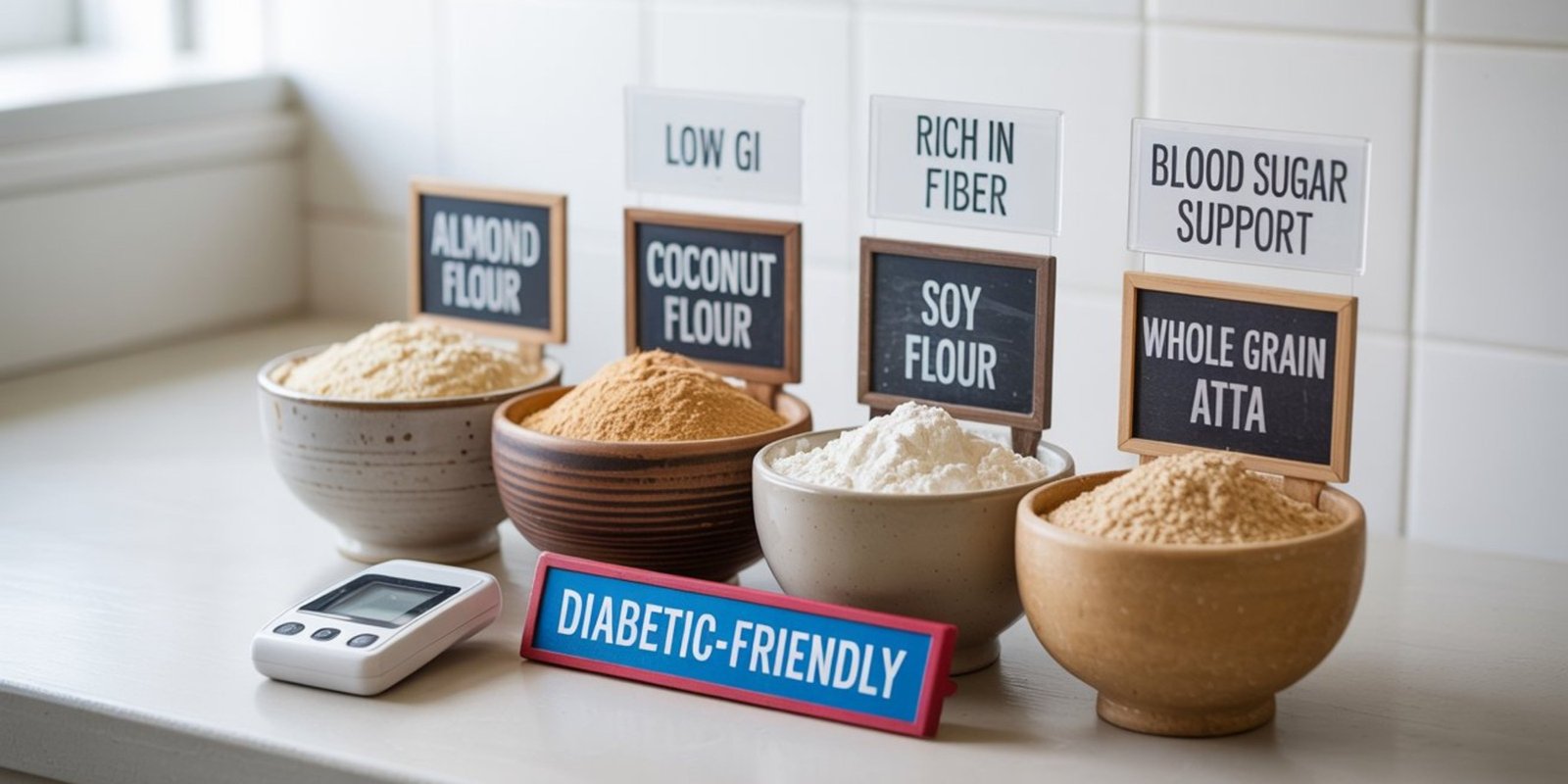

Dt. Natasha Mohan
Dietitian Natasha Mohan is one of the most influential and renowned nutritionist and dietitian, with over 3 Million Followers on YouTube and 200+ Million Views and with 10+ Years of Experience. Dietitian Natasha Mohan is a transformation expert, Motivational Speaker and Lifestyle Expert. She has touched million of lives. She specializes in Therapeutic Diets Like, PCOS/PCOD, Thyroid, Diabetes, Cholesterol, Blood pressure, and other lifestyle disorder.
Table of Contents
Best Diabetic-Friendly Flours for Stable Blood Sugar
Managing diabetes requires careful attention to diet, especially when it comes to carbohydrates. Choosing the right diabetic-friendly flours can help maintain stable blood sugar levels while still allowing you to enjoy your favorite foods. In this guide, we’ll explore the top flours that are low in glycemic index (GI), high in fiber, and packed with nutrients to support better blood sugar control.
Why Choose Diabetic-Friendly Flours?
People with diabetes need to avoid refined flours like maida (white flour), which can cause rapid spikes in blood sugar. Instead, diabetic-friendly flours offer:
✅ Low Glycemic Index (GI) – Slow digestion prevents sugar spikes.
✅ High Fiber Content – Improves digestion and blood sugar regulation.
✅ Rich in Protein & Healthy Fats – Keeps you full longer and stabilizes glucose levels.
✅ Nutrient-Dense – Packed with vitamins and minerals for overall health.
Now, let’s dive into the best flours for diabetics that you can incorporate into your diet.
Top 7 Diabetic-Friendly Flours for Blood Sugar Control
1. Almond Flour (Low-Carb & High-Protein)
GI: Very Low
Benefits: Rich in healthy fats, vitamin E, and magnesium.
Best For: Keto-friendly baking, pancakes, and muffins.
2. Coconut Flour (High-Fiber & Gluten-Free)
GI: Low
Benefits: Contains MCTs (medium-chain triglycerides) for energy.
Best For: Bread, cookies, and thickening sauces.
3. Chickpea Flour (Protein-Packed & Nutrient-Rich)
GI: Moderate (but balanced with fiber & protein)
Benefits: High in folate, iron, and plant-based protein.
Best For: Savory dishes like chilla, pancakes, and flatbreads.
4. Oat Flour (Heart-Healthy & Fiber-Rich)
GI: Low to Medium
Benefits: Contains beta-glucan, which improves insulin sensitivity.
Best For: Rotis, cookies, and porridge.
5. Flaxseed Flour (Omega-3 Rich & Low-Carb)
GI: Very Low
Benefits: Supports heart health and reduces inflammation.
Best For: Mixing with other flours for added nutrition.
6. Quinoa Flour (Complete Protein & Gluten-Free)
GI: Low
Benefits: Contains all nine essential amino acids.
Best For: Baking bread, muffins, and protein bars.
7. Soy Flour (High-Protein & Blood Sugar-Friendly)
GI: Low
Benefits: Rich in isoflavones, which may improve insulin response.
Best For: Rotis, pancakes, and protein-rich baked goods.
How to Use Diabetic-Friendly Flours in Your Diet
Replace refined flour in recipes with these alternatives.
Combine flours (e.g., almond + coconut flour) for better texture.
Monitor portion sizes—even healthy flours should be consumed in moderation.
Experiment with recipes like almond flour pancakes, chickpea flour chilla, or oat flour rotis.
Final Thoughts
Switching to diabetic-friendly flours can make a significant difference in managing blood sugar levels while keeping meals delicious and nutritious. Whether you choose almond flour for its healthy fats, chickpea flour for its protein, or oat flour for its fiber, each option provides unique benefits. You can also enjoy sugar-free sweets for diabetics made with these flours for a guilt-free treat. Start incorporating these flours into your diet today for better diabetes control and overall health!
Almond flour and coconut flour are among the best due to their low carb and high fiber content.
Whole wheat flour is better than refined flour but still has a moderate GI. Opt for almond, chickpea, or oat flour instead.
Yes! Besan has a low GI and is rich in protein and fiber, making it a great choice.
In moderation—balance them with other low-GI foods and monitor blood sugar levels.
Yes! Their high fiber and protein content promote satiety, reducing overeating.


